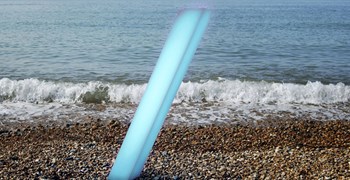In Pictures: European Space Agency's Philae Rosetta comet probe thrills scientists
This article originally appeared on Culture24.
All eyes are on a comet 261 million miles away as the world follows the progress of a daring space mission by a lander, named after an obelisk held at a National Trust propertyClick on the picture to launch the gallery
Separation was confirmed at ESA's Space Operation Centre, ESOC, in Darmstadt, Germany at 09.03 GMT © ESA - J Mai
asset_arena/6/51/60/506156/v0_master.jpg
asset_arena/6/51/60/506156/v0_master.jpg
Taken back in 2002, this image shows Rosetta being checked in ESA's Test Centre in Noordwijk, the Netherlands © ESA
asset_arena/7/51/60/506157/v0_master.jpg
asset_arena/7/51/60/506157/v0_master.jpg
It takes the radio signals from the transmitter on Rosetta 28 minutes and 20 seconds to reach Earth © ESA - J Mai
asset_arena/9/51/60/506159/v0_master.jpg
asset_arena/9/51/60/506159/v0_master.jpg
© ESA - J Mai
asset_arena/0/61/60/506160/v0_master.jpg
asset_arena/0/61/60/506160/v0_master.jpg
Comparing Comet 67P/Churyumov–Gerasimenko with the city of London © ESA/Rosetta/Navcam; Map data 2014 Google, Bluesky
asset_arena/1/61/60/506161/v0_master.jpg
asset_arena/1/61/60/506161/v0_master.jpg
Comparing the comet with the city of Rome. © ESA/Rosetta/Navcam; Map data 2014 Google, Bluesky
asset_arena/2/61/60/506162/v0_master.jpg
asset_arena/2/61/60/506162/v0_master.jpg
Rosetta's OSIRIS narrow-angle camera captured this parting shot of the Philae lander © ESA/Rosetta/MPS for OSIRIS Team MPS/UPD/LAM/IAA/SSO/INTA/UPM/DASP/IDA
asset_arena/3/61/60/506163/v0_master.jpg
asset_arena/3/61/60/506163/v0_master.jpg
© ESA/Rosetta/MPS for OSIRIS Team MPS/UPD/LAM/IAA/SSO/INTA/UPM/DASP/IDA
asset_arena/4/61/60/506164/v0_master.jpg
asset_arena/4/61/60/506164/v0_master.jpg
Rosetta's lander Philae took this parting shot of its mothership shortly after separation © ESA/Rosetta/Philae/CIVA
asset_arena/5/61/60/506165/v0_master.jpg
asset_arena/5/61/60/506165/v0_master.jpg
One of the many pits seen on the surface of the comet © ESA/Rosetta/NAVCAM
asset_arena/6/61/60/506166/v0_master.jpg
asset_arena/6/61/60/506166/v0_master.jpg
Relatively smooth, flat-topped plateaus that stand above the rugged surface on the larger lobe © ESA/Rosetta/NAVCAM
asset_arena/7/61/60/506167/v0_master.jpg
asset_arena/7/61/60/506167/v0_master.jpg
This scene features the boulder named Cheops, the largest and brightest boulder © ESA/Rosetta/NAVCAM
asset_arena/8/61/60/506168/v0_master.jpg
asset_arena/8/61/60/506168/v0_master.jpg
This unusual view takes a side-on look down the smaller lobe © ESA/Rosetta/NAVCAM
asset_arena/9/61/60/506169/v0_master.jpg
asset_arena/9/61/60/506169/v0_master.jpg
This ridge traces up to a peak in the distance, through a cascade of boulders © ESA/Rosetta/NAVCAM
asset_arena/0/71/60/506170/v0_master.jpg
asset_arena/0/71/60/506170/v0_master.jpg
This shot was captured from a distance of 9.8 km from the centre of the comet © ESA/Rosetta/NAVCAM
asset_arena/1/71/60/506171/v0_master.jpg
asset_arena/1/71/60/506171/v0_master.jpg
A dramatic view across the body of the large lobe © ESA/Rosetta/NAVCAM
asset_arena/2/71/60/506172/v0_master.jpg
asset_arena/2/71/60/506172/v0_master.jpg
Cliffs of the comet's large lobe rise from the shadows © ESA/Rosetta/NAVCAM
asset_arena/3/71/60/506173/v0_master.jpg
asset_arena/3/71/60/506173/v0_master.jpg
The pit-laden comet is growing ever-closer to the sun © ESA/Rosetta/NAVCAM
asset_arena/4/71/60/506174/v0_master.jpg
asset_arena/4/71/60/506174/v0_master.jpg
A faint stream of gas and dust can be seen, showing that an active region is nearby © ESA/Rosetta/NAVCAM
asset_arena/5/71/60/506175/v0_master.jpg
asset_arena/5/71/60/506175/v0_master.jpg
Rosetta mission poster showing the deployment of the Philae lander © ESA/ATG medialab; Comet image: ESA/Rosetta/Navcam
asset_arena/6/71/60/506176/v0_master.jpg
asset_arena/6/71/60/506176/v0_master.jpg
The image of the comet was taken with the navigation camera on Rosetta (ESA/Rosetta/NavCam) © ESA/ATG medialab
asset_arena/7/71/60/506177/v0_master.jpg
asset_arena/7/71/60/506177/v0_master.jpg
Scientists are waiting to hear back from the probe as part of a mission supported by archaeologists and astronomers and inspired by the British Museum's Rosetta Stone.
- Read Culture24's story about the Egyptology behind the project. Follow the Philae on Twitter @Philae2014 and use the hashtag #CometLanding.
What do you think? Leave a comment below.
More from Culture24's Science and Nature section:
Name that rhino: Museum asks public to name huge animal specimen
Search is on for mysterious Victorian female seaweed collector
Museum of Zoology calls on public to sing like finback whale












